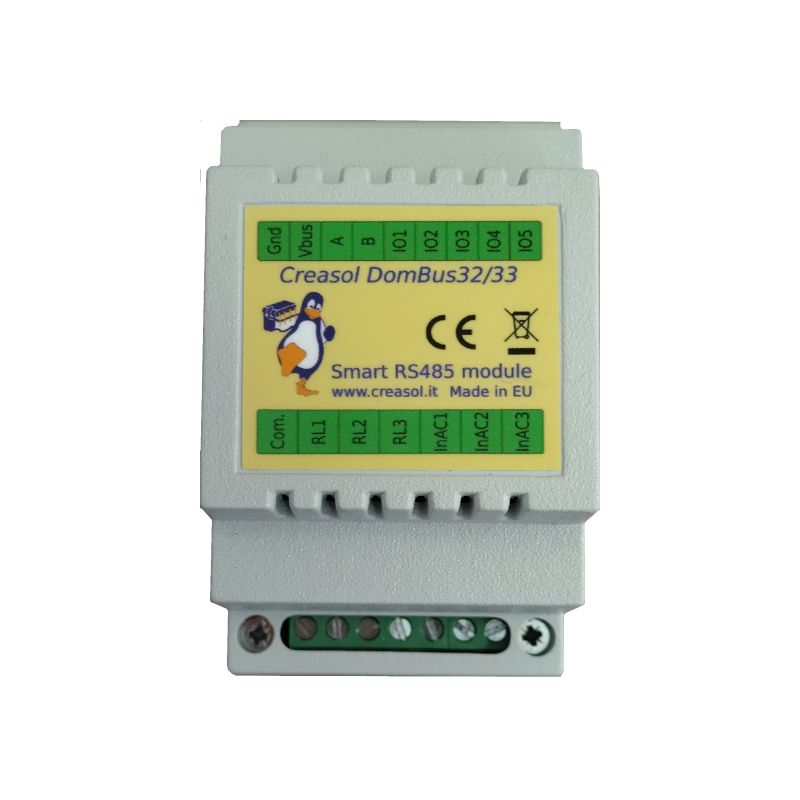
- -25%
Email: store@creasol.it - Telegram: CreasolTech - Whatsapp: +393283730010
Prioritārais pasts: ātri un lēti - Express kurjer
Pirms preču atgriešanas sazinieties ar mums!

DIN-sliedes modulis paredzēts 3 esošo apgaismojuma domotizēšanai, izmantojot 230V spiedpogu un pakāpenisku releju.
Releju izmanto, lai pārslēgtu ārējo pakāpenisko releju (nosūta impulsu uz tā 230 V spoli), un maiņstrāvas ieeja tiek izmantota, lai uzraudzītu apgaismojuma stāvokli (ON/OFF).
5 analogās/digitālās I/O var savienot ar zemsprieguma spiedpogām, skaitītājiem, temperatūras attāluma un trauksmes sensoriem.
 Pilns atbalsts: lielāko daļu produktu izstrādājam mēs!
Pilns atbalsts: lielāko daļu produktu izstrādājam mēs!
Email: store@creasol.it - Telegram: CreasolTech - Whatsapp: +393283730010
 Pasūtījumi tiek nosūtīti 1 darba dienas laikā
Pasūtījumi tiek nosūtīti 1 darba dienas laikā
Prioritārais pasts: ātri un lēti - Express kurjer
 24 mēnešu garantija, ērta atgriešana/atmaksa
24 mēnešu garantija, ērta atgriešana/atmaksa
Pirms preču atgriešanas sazinieties ar mums!
DomBus33 ir aDIN-RAIL modulis, 54 mm plats,ar3 releju izejas,3 maiņstrāvas ieejasun5 zemsprieguma I/Ospieejams ar divām dažādām programmaparatūrām:
DomBus33 ir tāda pati aparatūra kāDomBus32bet ar programmaparatūru, kas īpaši paredzēta apgaismojuma kontrolei/uzraudzībai: šādā veidā gaismu var aktivizēt ar esošajām 230 V spiedpogām (kas sūta impulsus uz soļu releja spoli), kā arī ar domotisko kontrolieri (sižeti, grupas, visas gaismas izslēgšana, izejot no ēkas, vadības gaisma ar viedtālruni, gaismas aktivizēšana nejauši, kad signalizācija ir AWAY režīmā, ...)./p>

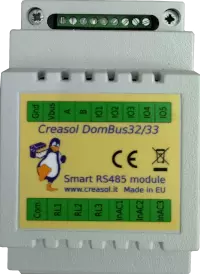
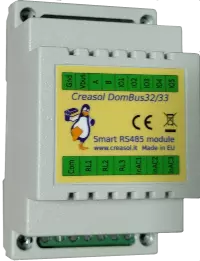
Lai vienkāršotu elektroinstalāciju, spaiļu blokam ir 3 spailes relejiem, 3 maiņstrāvas ieejām un 1 kopīgs spaile (jāpievieno neitrālai vai līnijai).: šādā veidā ir vieglāk un ātrāk izveidot savienojumu ar the modulis elektriskām slodzēm ar vienu un to pašu ķēdes pārtraucēju (piemēram, apgaismojuma sistēma, apkures sistēmas vārsti, ...). Lūdzu, rūpējieties parpievienojiet tikai slodzes, kuras aizsargā tas pats RCCB (automātiskais slēdzis). Protams, ir iespējams izmantot relejus, lai pārslēgtu zemsprieguma slodzes vai izvēlētos iekārtas (piemēram, siltumsūkņa) darba režīmu, savienojot kopējo līniju ar GND vai līdzstrāvas barošanas spriegumu: šajā gadījumā 3 maiņstrāvas ieejas ir bezjēdzīgas.
Tāpat kā citi DomBus moduļi,visus portus var konfigurēt dažādos veidos, un arī šis modulisatbalsta DCMD, komandas, kas tiek nosūtītas uz to pašu vai citiem DomBus moduļiemveikt vienkāršas darbības, kas ļauj sasniegt augstu uzticamību (DCMD komandas darbojas pat tad, ja domotic kontrolleris nedarbojas) un vienkārša programmēšana (nav nepieciešams izveidot automatizāciju mājas automatizācijas kontrollerī: vienkārši konfigurējiet DomBus portus, lai veiktu darbības ar notikumiem). Visbeidzot, bet ne mazāk svarīgi, tāpat kā citi DomBus moduļi, DomBus33 iroptimizēts, lai iegūtu zemu enerģijas patēriņu, parasti ir mazāks par 10 mW (0,75 mA @ 13,6 V) un mazāks par 150 mW, kad visi 3 releji ir IESLĒGTI (10 mA @13,6 V).
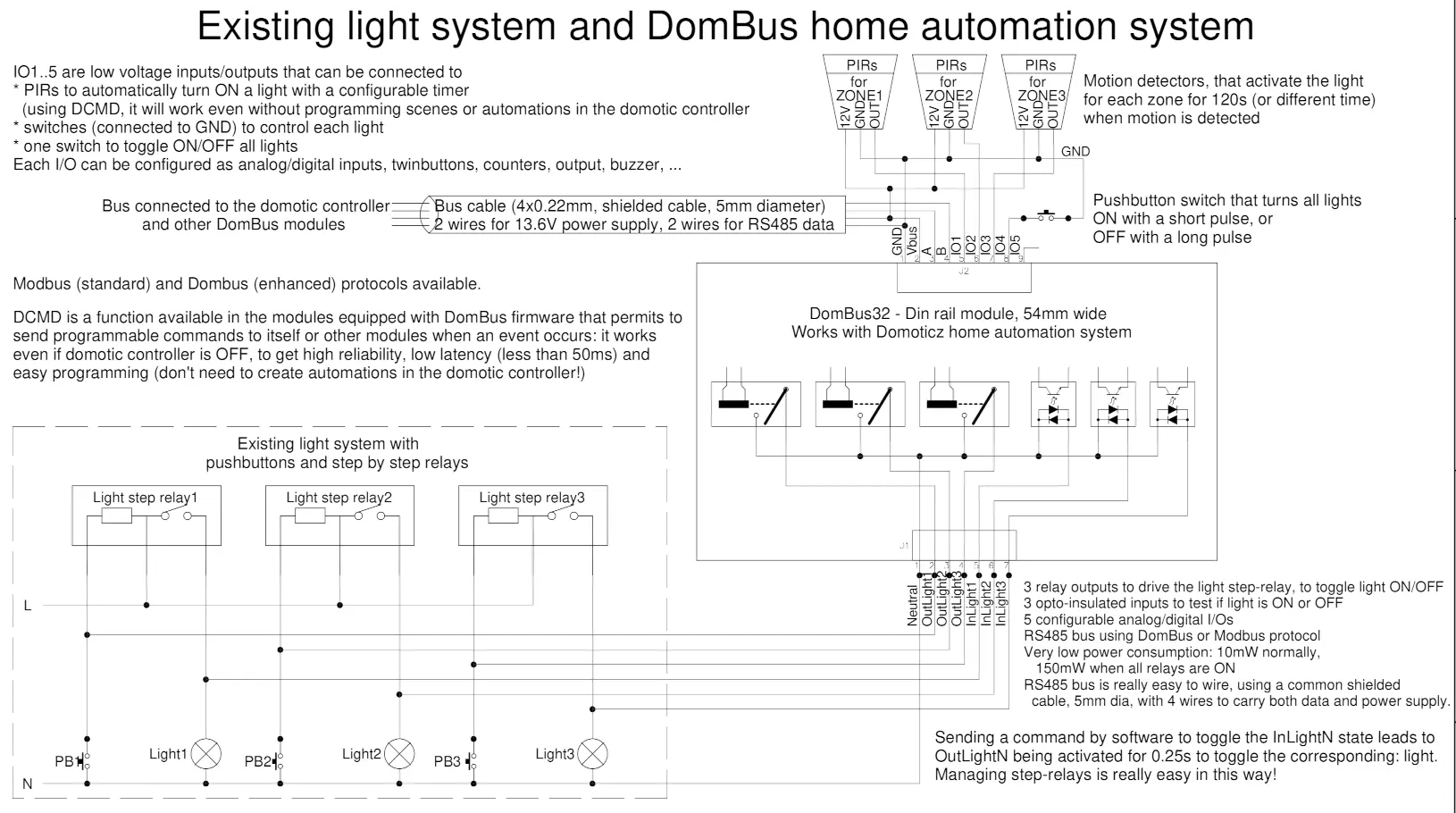
The following video shows a presentation of some domotic modules designed and produced in Italy by Creasol to make a reliable, easy and power-optimized home automation system.
The next video shows our Smart EVSE module that can be used to charge the electric car by using only solar power, or adding 25/50/75/100% of available power from the electrical grid.
Our industrial and home automation modules are designed to be
Modules are available in two version:
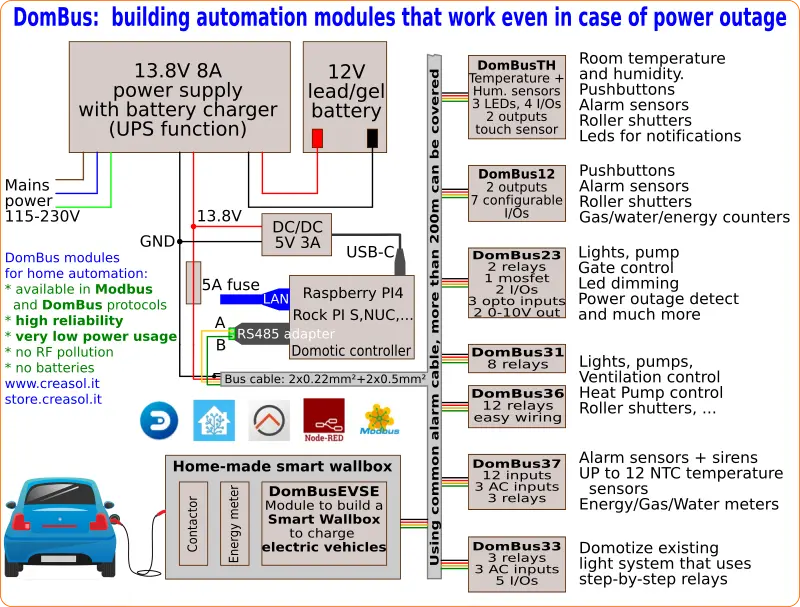
Store website - Information website
For our products we can offer FULL SUPPORT and CUSTOMIZATION: please contact us by Email or Telegram
 Complete solution to make a Smart EVSE, charging the electric vehicle using only energy from renewable source (photovoltaic, wind, ...), or adding 25-50-75-100% of available power from the grid.
Complete solution to make a Smart EVSE, charging the electric vehicle using only energy from renewable source (photovoltaic, wind, ...), or adding 25-50-75-100% of available power from the grid.
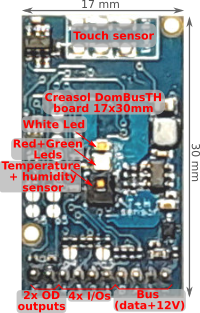 Compact board, 32x17mm, to be installed on blank cover with a 4mm hole in the middle, to exchange air for the relative humidity sensor. It can be installed in every room to monitor temperature and humidity, check alarm sensors, control blind motor UP/DOWN, send notifications (using red and green leds) and activate white led in case of power outage.
Compact board, 32x17mm, to be installed on blank cover with a 4mm hole in the middle, to exchange air for the relative humidity sensor. It can be installed in every room to monitor temperature and humidity, check alarm sensors, control blind motor UP/DOWN, send notifications (using red and green leds) and activate white led in case of power outage.
Includes:
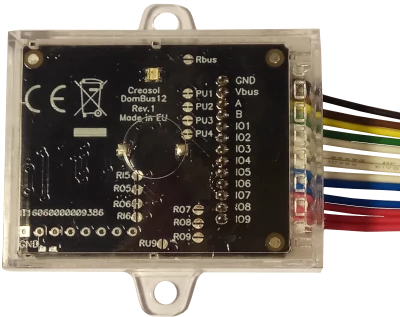 Very compact, versatile and cost-effective module with 9 ports. Each port can be configured by software as:
Very compact, versatile and cost-effective module with 9 ports. Each port can be configured by software as:
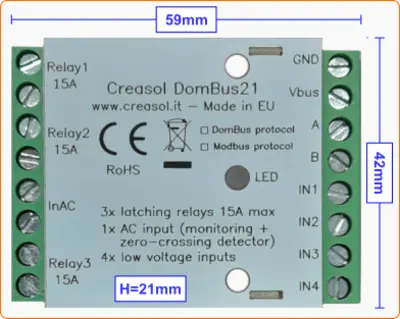 Very low power consumption module designed to enable up to 3 high power loads, up to 15A (3kW).
Very low power consumption module designed to enable up to 3 high power loads, up to 15A (3kW).
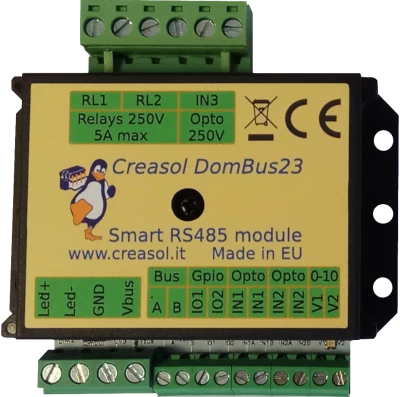 Versatile module designed to control gate or garage door.
Versatile module designed to control gate or garage door.
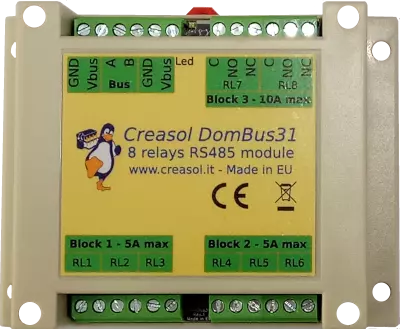 DIN rail low profile module, with 8 relays and very low power consumption:
DIN rail low profile module, with 8 relays and very low power consumption:
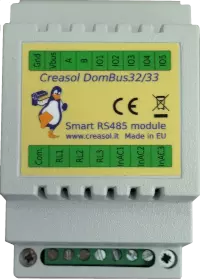 Versatile module with 230V inputs and outputs, and 5 low voltage I/Os.
Versatile module with 230V inputs and outputs, and 5 low voltage I/Os.
 Module designed to control 3 lights already existing and actually controlled by 230V pushbuttons and step-by-step relays. In this way each light can be activated by existing pushbuttons, and by the domotic controller.
Module designed to control 3 lights already existing and actually controlled by 230V pushbuttons and step-by-step relays. In this way each light can be activated by existing pushbuttons, and by the domotic controller.
Each relay can toggle the existing step-relay, switching the light On/Off. The optoisolator monitors the light status. The 5 I/Os can be connected to pushbuttons to activate or deactivate one or all lights.
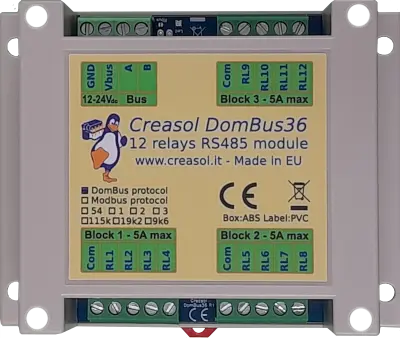 DIN rail module, low profile, with 12 relays outputs and very low power consumption.
DIN rail module, low profile, with 12 relays outputs and very low power consumption.
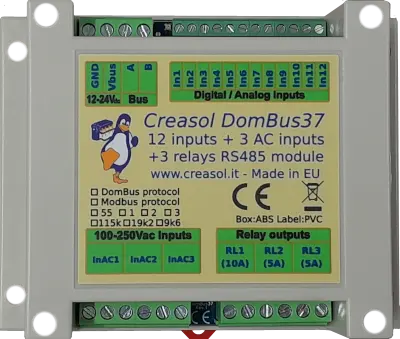 Module designed to be connected to alarm sensors (magnetc contact sensors, PIRs, tampers): it's able to monitor mains power supply (power outage / blackout) and also have 3 relays outputs.
Module designed to be connected to alarm sensors (magnetc contact sensors, PIRs, tampers): it's able to monitor mains power supply (power outage / blackout) and also have 3 relays outputs.
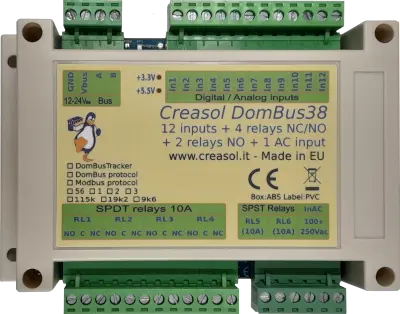 DIN rail module designed for burglar alarm system.
DIN rail module designed for burglar alarm system.
![]() DIN rail module that control azimuth + elevation/tilt motors of a sun tracker, to maximize photovoltaic energy production during the day and seasons.
DIN rail module that control azimuth + elevation/tilt motors of a sun tracker, to maximize photovoltaic energy production during the day and seasons.
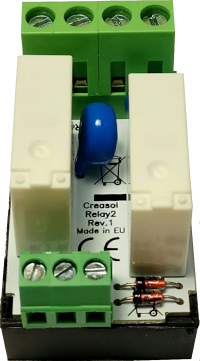 Simple module with 2 relays, to be used with DomBus modules or other electronic boards with open-collector or open-drain outputs
Simple module with 2 relays, to be used with DomBus modules or other electronic boards with open-collector or open-drain outputs
 IoT board designed for NodeMCU v3 board using ESP8266 WiFi microcontroller
IoT board designed for NodeMCU v3 board using ESP8266 WiFi microcontroller